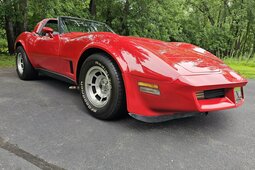Cylinder deactivation is one of those technologies that is increasingly making its way into cars of different sizes with different engines. This system began being put into passenger cars for one reason alone – stricter emission standards for all cars sold in the European Union.
Currently, this technology is most often used in Volkswagen Group products. The German industrial giant started using this technology in a 1.4-litre, 4-cylinder engine that, according to the manufacturer, consumed 0.4 litres less fuel per 100 km and emitted 10 g/km less CO2. Driving economically, the engine’s mileage could increase by one or two litres per 100 km. However, this technology was developed not 5 or 10 years ago, but much earlier.
The First Attempt – In the Very Beginning of the Car’s Existence
Engine cylinder deactivation technology was first introduced to the public in Boston (USA) in 1905. It was used in a Sturtevant.
Back then, the pioneers of this technology allowed the driver to choose between two drive modes. The first one was using all six engine cylinders. The second one was more economical, when the engine used only three of the six cylinders.
The unusual and widely unnecessary technology came back onto the scene in 1916 in the Enger Twin-Unit Twelve. This was a 60-degree, 12-cylinder engine with a unique design which was also fitted with cylinder deactivation technology.
The driver could turn off the six engine cylinders by using the deactivation lever on the steering column. When the lever was pulled, the intake manifold on the right side of the engine would close. Meanwhile, the exhaust valves on the same side of the engine block would open.
Unfortunately, further development of this engine was terminated by the suicide of the man behind it. Having come to the realisation that the financial burden was too great, Frank Enger shot himself in his office.
The Oil Crisis
The biggest victim of the oil crisis that hit in the 1970s was the automotive industry, which was not prepared for it. US automakers suffered the most, since practically all of the Chryslers, Chevrolets, Fords and other cars that American companies were producing were fitted with engines that were not the most economical.
While a giant crowd of American drivers were queuing at petrol stations, a few Cadillac engineers began to look for solutions to the problem. How do you keep producing these land yachts while also ensuring that they use a lot less fuel?
The Cadillac engineers brought a 7-litre, 8-cylinder engine into their workshop. One that was huge, lazy, and had quite an appetite. After removing all the screws they could and separating all of the parts, the Cadillac specialists decided to reduce the engine displacement from seven to six litres and get rid of two cylinders. They also gave the new motor a direct injection system.
The first attempt was the first disappointment. Even though the engine was more efficient, its appetite for fuel was still much too big.
Cadillac Was Forced to Recall Cars
That’s when the Cadillac specialists came up with an idea: fit the engine with a system that turned off a few cylinders when the car was cruising.
Working with colleagues from Eaton, General Motors engineer Chris Meagher built a new prototype engine – the L62, which was equipped with a cylinder deactivation system.
When the car was cruising at a speed of, say, 90 km/h, the system reduced engine power and switched off two or four cylinders. According to company representatives, the 6-litre engine then consumed the same amount of fuel per 100 km as a 4.5-litre V-6 or a 3.0-litre V-4.
The system, which was controlled by a special computer, monitored engine speed, EGR, intake manifold air pressure, accelerator position, and coolant temperature, and shut off either two or four cylinders where necessary.
Wanting to make the most of it, the Cadillac engineers started putting the new engine in virtually all of their models, but like all new technologies, this one still had room for improvement. When the cars made it out onto the roads with traditional drivers behind the wheels, all kind of problem began to surface.
The microprocessors installed in the system reacted too slowly to sudden changes in driving conditions or the mood of the driver. If the driver suddenly floored it, the system forced him to wait for a few seconds and only then reactivated the cylinders. There were even cases where the engine would begin to buck or stall.
General Motors didn’t wait and recalled all of the Cadillac models that were equipped with this technology. Instead of trying to update the system itself, the American company told all of the Cadillac dealers to disabled the cylinder deactivation system.
---
Find your dream car among our Car Categories!














